18 Birds That Are Orange And Black (With Photos, ID & Info)
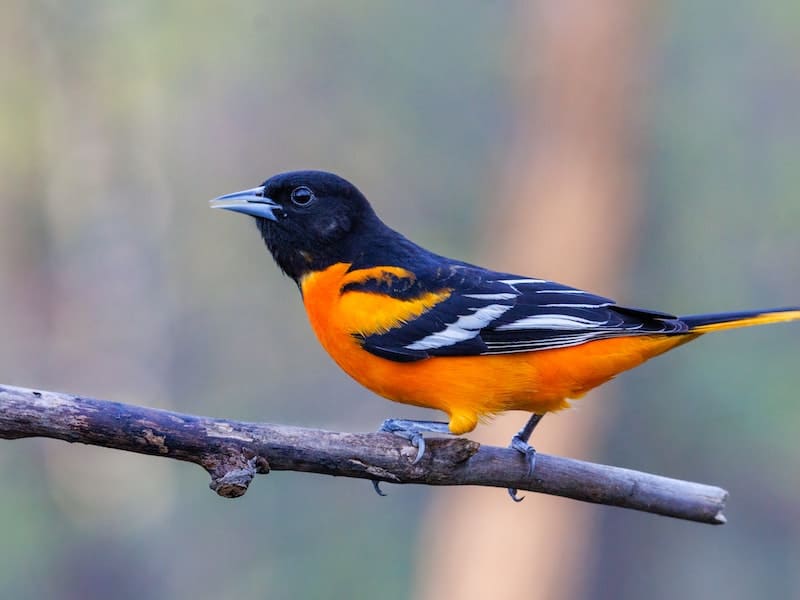
Today I will show you a list with 18 Orange and Black Birds. Birds come in all shapes and sizes, and many of them are very colorful. Some of the most beautiful birds are those that are orange and black. If you’re a bird lover, then you’ll want to learn more about these interesting birds.
Very few creatures can match the brilliance of the way birds show colorful plumage. The color variations in birds are linked to their diet, habitat, geographic location, and the genome they contain.
The number of carotenoid pigments in birds’ diet and how they metabolize them is also linked with the colors of birds.
In this article, we’ll take a look at some of the most common orange and black birds, and we’ll discuss their unique characteristics.
Orange and black birds in North America
Orange and black birds in North America are common across the continent. There are divided into several different groups. Some prefer dry and open areas, while others like to dwell in wet and densely vegetated areas.
Moreover, some birds stay at the same location all year long while others migrate to the North or South during different seasons.
There are variations in male and female birds, the male being the more brightly colored in contrast to females with dull colors. So, let’s follow the list and look at different orange and black-colored birds in North America.
1. Baltimore Oriole
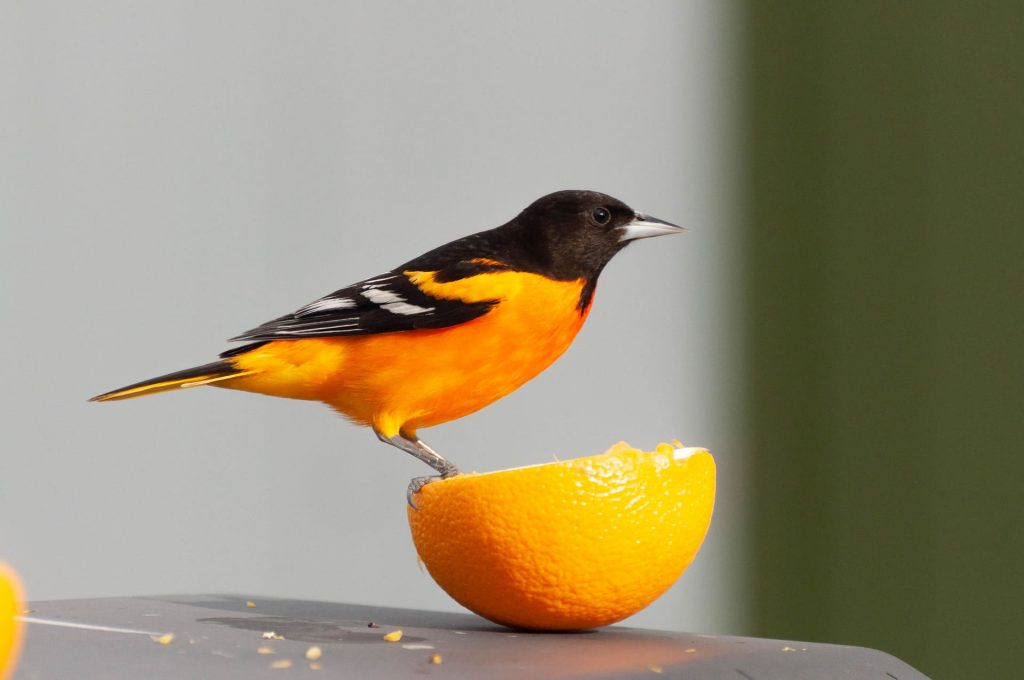
- Length: 6.7 to 7.5 inches
- Wingspan: 9.1 to 11.8 inches
- Weight: 1.1 to 1.4 oz
- Plumage Pattern: Orange below parts and black upper parts.
- Most Prominent Feature: Dark black Head and throat.
Baltimore orioles are considered the sign of spring in North America. Males have bright orange and black plumage with white bars on the upper side of their wings. The head, neck, and back are black, while the chest, belly, and rump are usually orange.
The females have grayish-brown backs and wings while yellowish heads and upper parts. They breed in the Eastern and Central states of the US. In winter, these birds migrate to Central America to escape the low temperatures.
Bullock’s Oriole
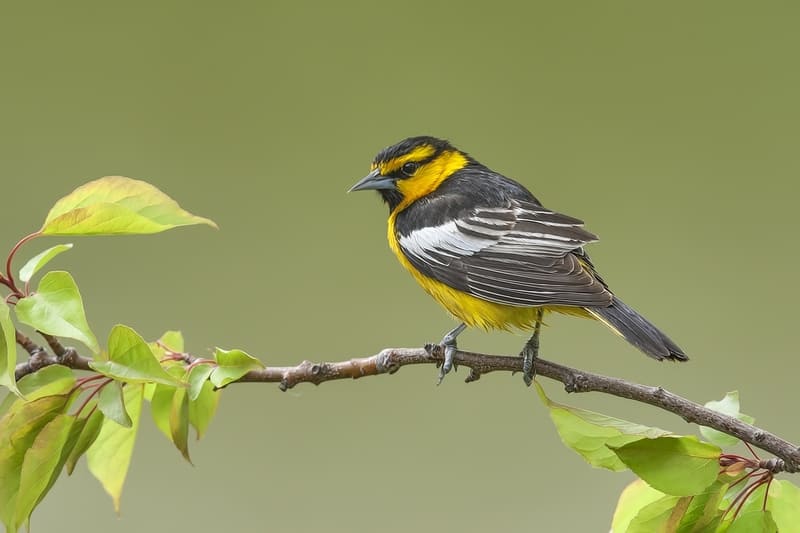
- Length: 6.7 to 7.5 inches
- Wingspan: 11 to 12.2 inches
- Weight: 1.0 to 1.5 oz
- Plumage Pattern: Orange and black with yellow cheeks and a black mask.
- Most Prominent Feature: Black throat and white borders of wings.
Bullock’s oriole males have bright orange-colored faces, breasts, bellies, and rump. They have black heads with black color around their eyes. Their wings are white and black. The females have duller color plumage with grayish backs and yellow heads.
They are native to the western states of the US. They breed before migrating south as far as Mexico to spend winter. They make their nests in the woodlands and parks. They usually visit your garden after returning from migration for some grape jelly to regain their energy.
Altamira Oriole
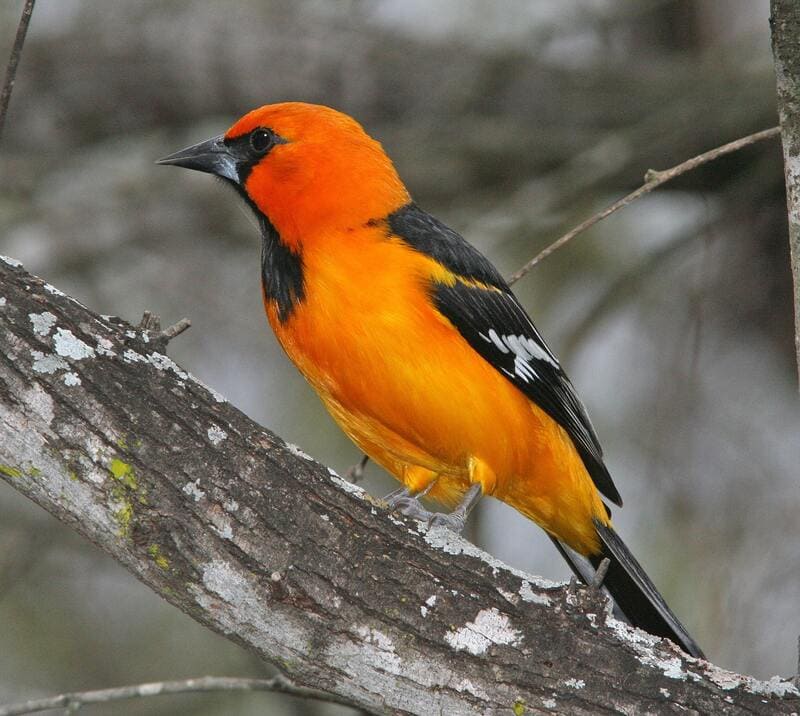
- Length: 8.3 to 9.8 inches
- Wingspan: 13.0 to 14.2 inches
- Weight: 1.7 to 2.3 oz
- Plumage Pattern: Orange and black with white stripes on black wings.
- Most Prominent Feature: Black eyes and neck
Altamira Oriole presents a bright yellowish-orange body with a black back, wings, and tail. They are not very common to find in the US except in Rio Grande Valley and Texas, where they remain throughout the year. You can watch them in pairs because that is how they stay.
Spot-breasted Oriole
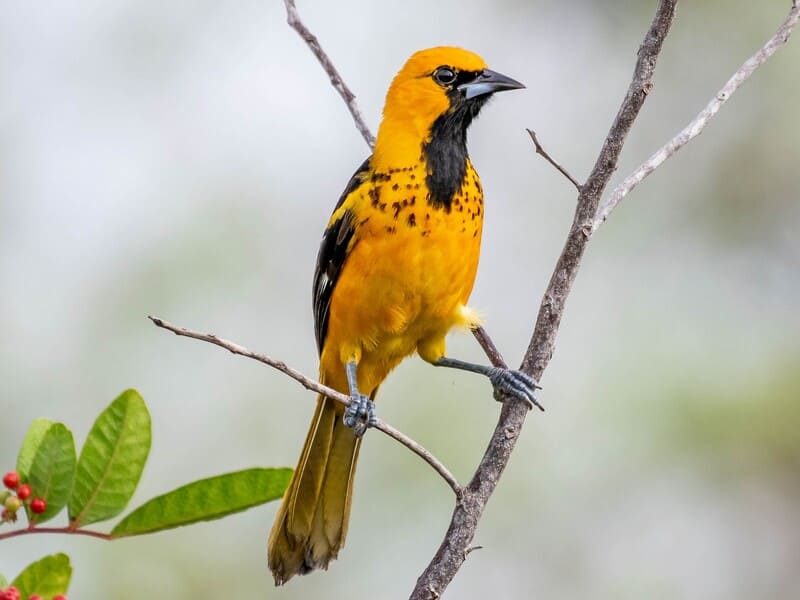
- Length: 8.3 to 9.4 inches
- Wingspan: 12 to 13 inches
- Weight: 1.6 to 2.0 oz
- Plumage Pattern: Orange and black plumage with black spots on the breast.
- Most Prominent Feature: Spots on the chest with a black mask.
As the name suggests, Spot-breasted orioles have black spots on their breast and full black throat. They have black wings with white or yellow edges and black tails. They are not very common in the US and only live in Florida and along the Gulf Coast. They are native to Mexico and Central America.
Say’s Phoebe
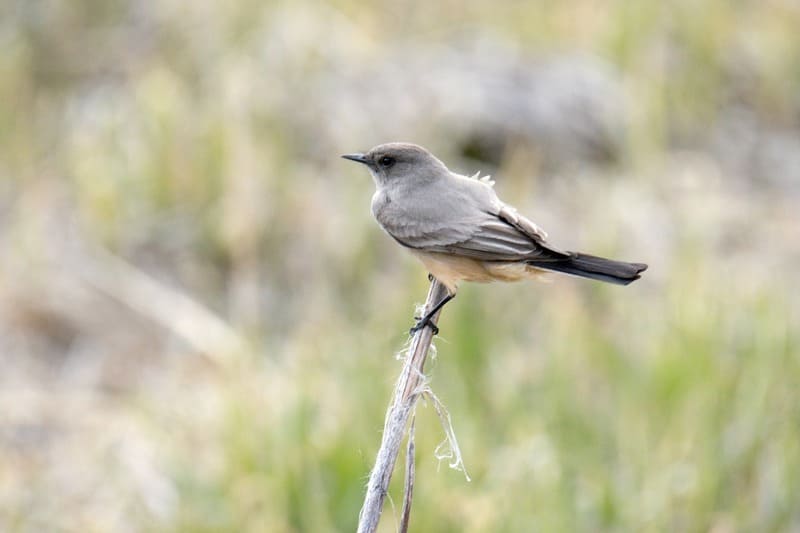
- Length: 5.6 to 6.7 inches
- Wingspan: 11.2 to 13 inches
- Weight: 0.7 to 0.8 oz
- Plumage Pattern: Light orange and brownish-black plumage.
- Most Prominent Feature: Burnt-orange breast and rump with dark black tail
Most of the behavior and features of the Say’s phoebe match its eastern cousin, the Eastern Phoebe. It nests around old buildings and sheds.
The breeding range of Say’s Phoebe extends from central Mexico all the way to the arctic tundra. Thus you can expect to catch a glimpse of this beautiful bird in this region.
It can live without water for long durations and likes to dwell in hot and arid conditions. The female Say’s phoebe lays biannual batches of four to five eggs. It has two lyrics attributed to her whistling call. These features make it very unique and attractive.
American Redstart
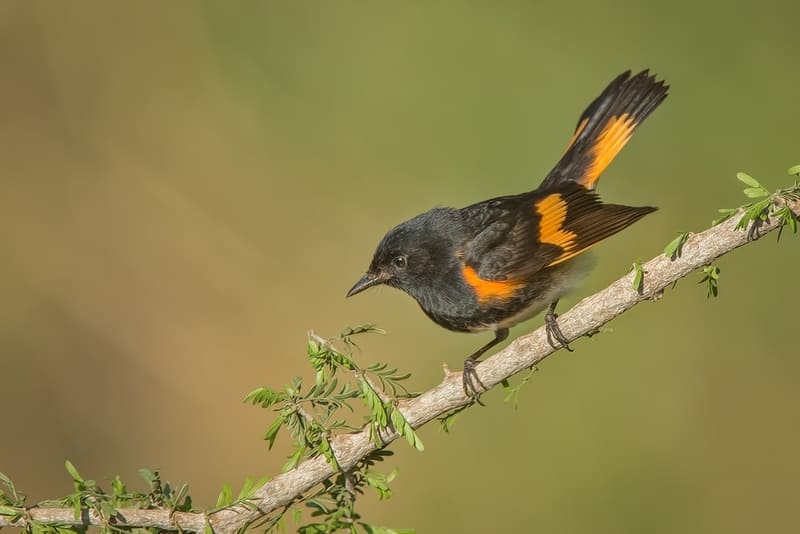
- Length: 4.3 to 5.1 inches
- Wingspan: 6.3 to 7.5 inches
- Weight: 0.2 to 0.3 oz
- Plumage Pattern: Orange and black plumage with a white underbelly.
- Most Prominent Feature: Bright orange sides and darkest face.
The American redstart is a very colorful bird with orange and black plumage with white bellies.
The females have grayish colors rather than black over yellow patches. They breed in Eastern US states, and Canada moves to Central states during migration.
Eastern Towhee
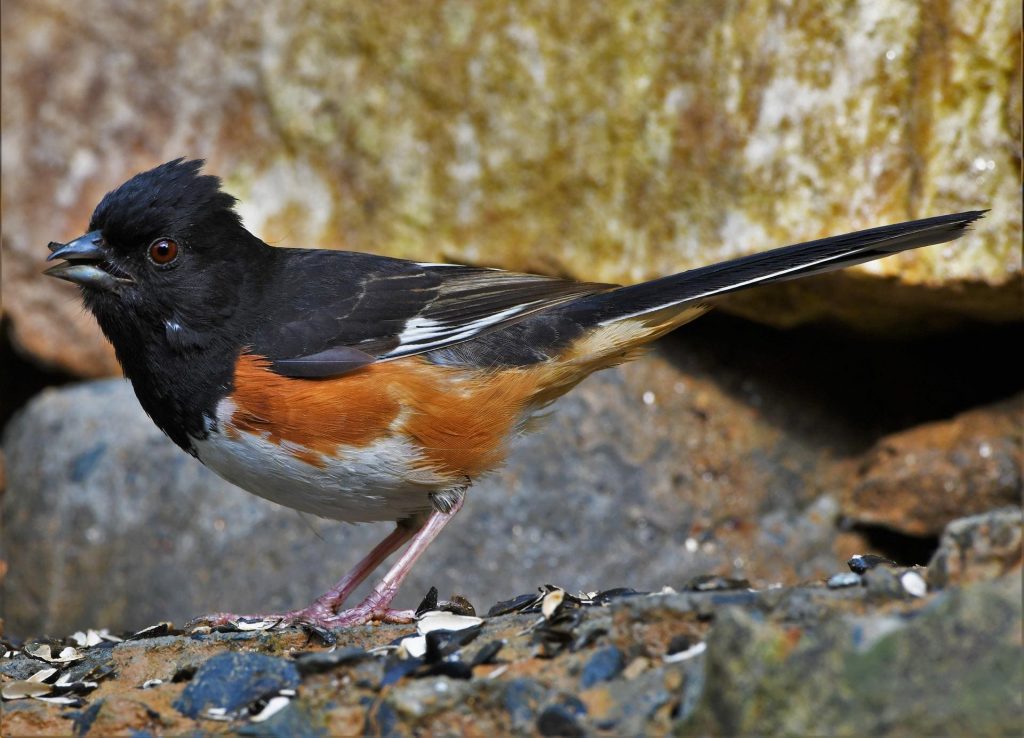
- Length: 6.8 to 8.2 inches
- Wingspan: 7.9 to 11.0 inches
- Weight: 1.1 to 1.8 oz
- Plumage Pattern: Orange, black and white plumage.
- Most Prominent Feature: Rusty orange sides and long tail.
The eastern towhees are large sparrows with long tails. The males have a black head, neck, and back with rusty orange sides and a white underbelly. In contrast, females have more brown color in the place of black.
They mostly live in southeastern states and move a little south in winter. They visit backyards with dense vegetation and bird feeders filled with sunflower, crushed corn, and millet.
Blackburnian Warbler
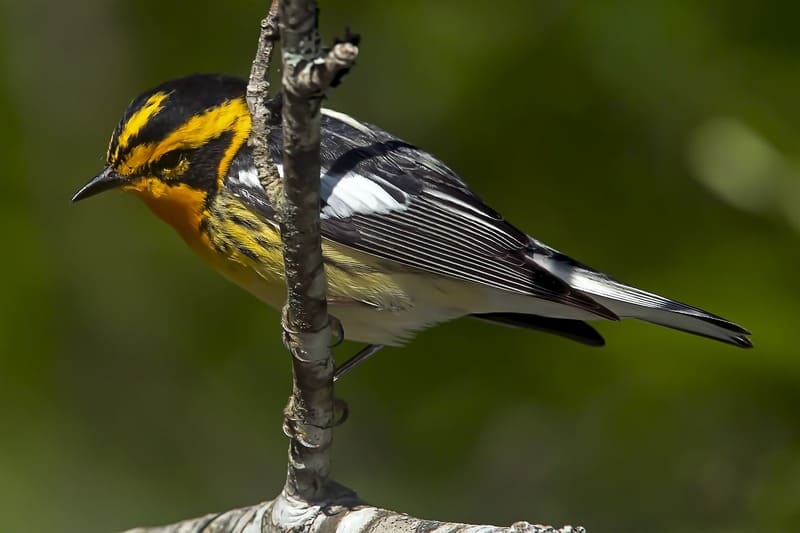
- Length: 4.3 to 4.7 inches
- Wingspan: 7.9 to 9.1 inches
- Weight: 0.3 to 0.4 oz
- Plumage Pattern: Black and orange with a white rump.
- Most Prominent Feature: Burning orange throat with face markings.
The male blackburnian warbler has black and orange plumage, a burning orange neck, face markings, and black wings with white stripes. The lower part of the belly has some white markings. The female has a more yellowish color than an orange one.
They breed in northeastern US states and Canada and move towards the north during winter to beat the cold weather. They are top tree birds and often stay away from the sight of the birdwatchers.
Brambling
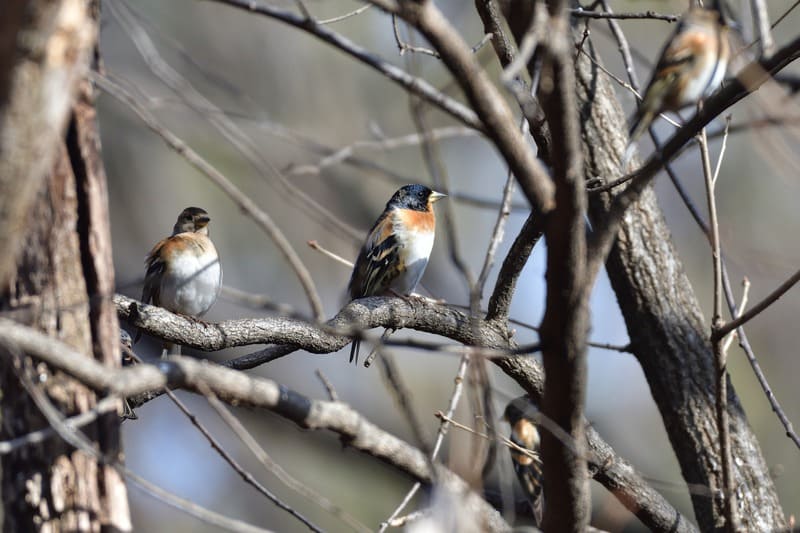
- Length: 5.5 to 6.3 inches
- Wingspan: 9.5 to 10.2 inches
- Weight: 8.1 to 1.0 oz
- Plumage Pattern: Black and orange plumage with stripes on wings.
- Most Prominent Feature: Black and brownish orange-spotted head.
Bramblings are black and orange birds. These birds are native to Europe and Asia but migrate to Alaska during winter. They have a brownish-orange neck, chest, and sides, while the head is more of a mix.
Black-headed Grosbeak
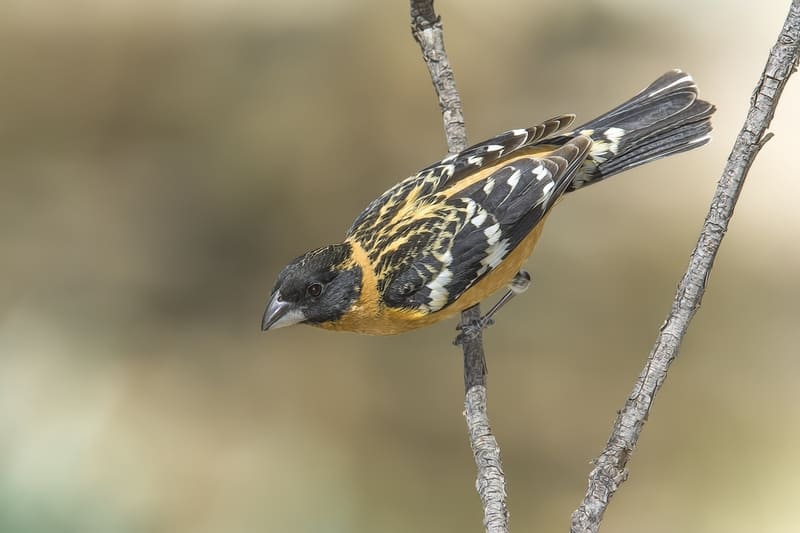
- Length: 7.1 to 7.5 inches
- Wingspan: 12.0 to 12.6 inches
- Weight: 1.2 to 1.7 oz
- Plumage Pattern: Orange and black with white spots on black wings.
- Most Prominent Feature: A bright yellow spot on the belly.
Black-headed grosbeaks are songbirds with a larger size than usual songbirds. They have dark blackheads with an orange breast, back of the neck, and belly. The wings have white spots that make it a spectacular scene during flight.
The birds breed in the western United States, migrate to the South, and spend winter in Mexico.
Northern Red Bishop
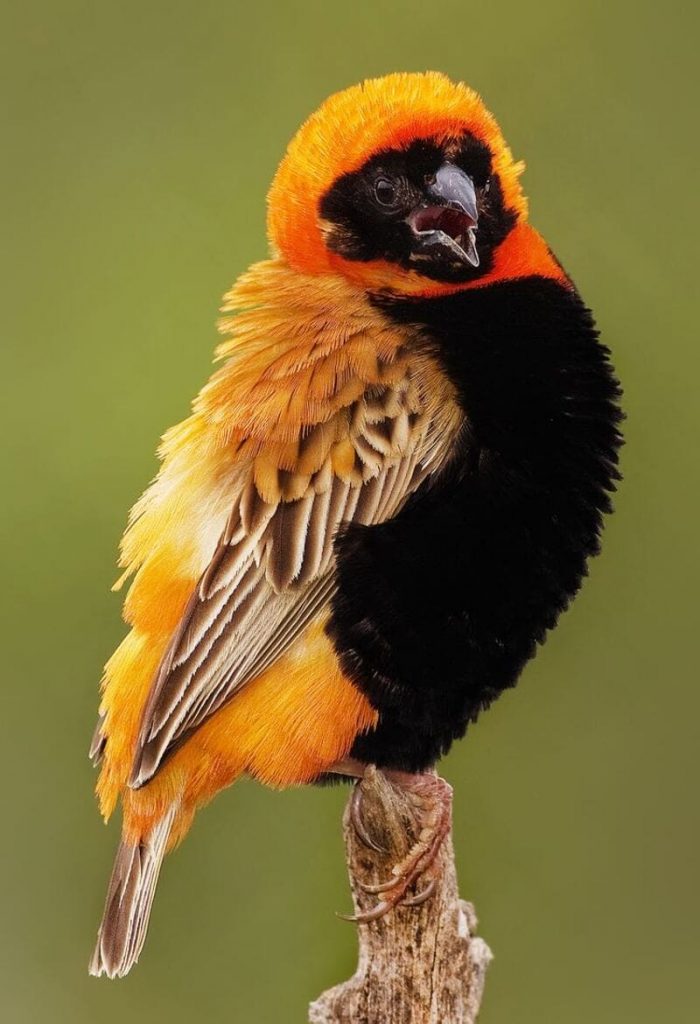
- Length: 4.5 to 5.5 inches
- Wingspan: 7.5 to 8.5 inches
- Weight: 0.3 to 0.4 oz
- Plumage Pattern: Orange and black plumage with clear boundaries between both colors.
- Most Prominent Feature: Big black head with a conical bill.
Northern Red Bishops are small native birds of Africa but now have some populations in California and Texas. The population is thought to be of escaped pet birds.
The male birds have orange and black plumage, which turn bright during mating season. Females are white and brown with similar patterns.
Western Tanager
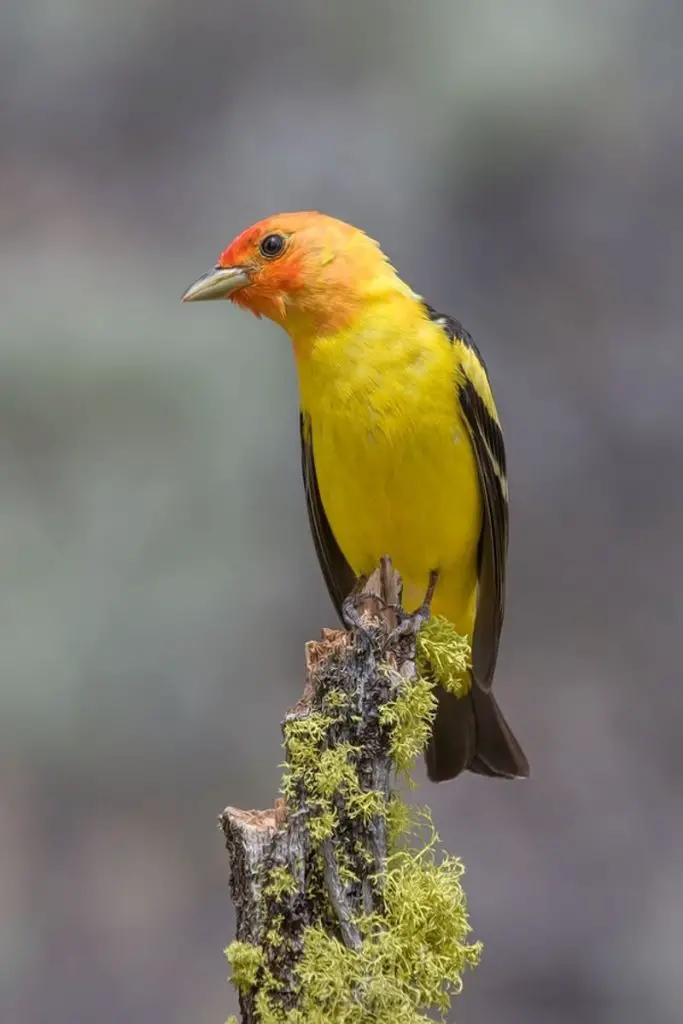
- Length: 6.3 to 7.5 inches
- Wingspan: 11.0 to 11.5 inches
- Weight: 0.8 to 1.3 oz
- Plumage Pattern: Orange, yellow, and black plumage.
- Most Prominent Feature: Burning orange-red head and throat.
The western tanagers have a yellow body and black wings with some white stripes. Their heads are flaming orange-red. They breed in the northern US and migrate to the South during winter.
They are shy birds and try to stay hidden in canopies of the trees in conifer forests. They eat insects and fruits, so you can attract these birds to your garden by offering dry fruits, oranges, and other fruits.
Flame-colored Tanager
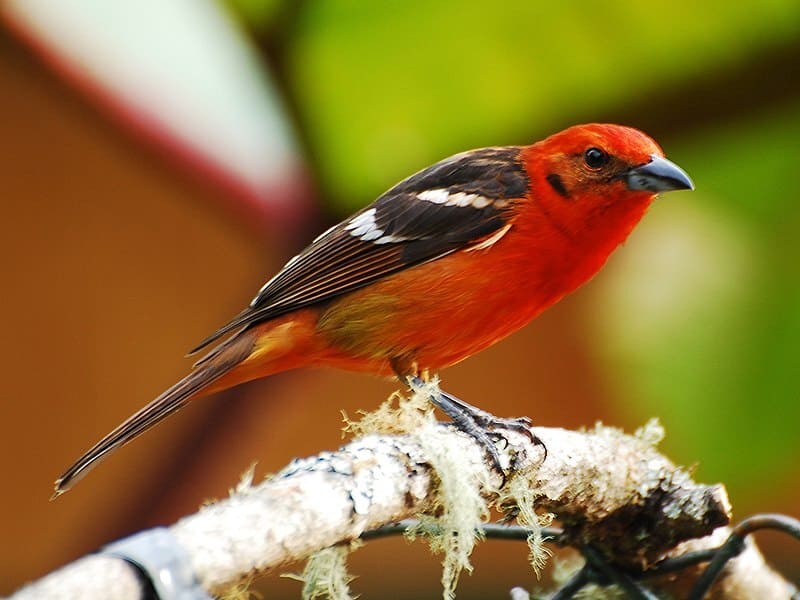
- Length: 7.1 to 7.5 inches
- Wingspan: 12.0 to 13.5 inches
- Weight: 1.13 to 1.71 oz
- Plumage Pattern: Flamed orange and black plumage.
- Most Prominent Feature: Flamed orange throat and small bill.
The flame-colored tanagers are native to Arizona, where they breed in the forests of South America. However, you can spot them as far as Texas, but they usually stay in Mexico and Central America.
The male tanager represents a bright orange color with an inclination towards more reddish colors. In contrast, yellowish-orange is the color of the females.
Northern Cardinal
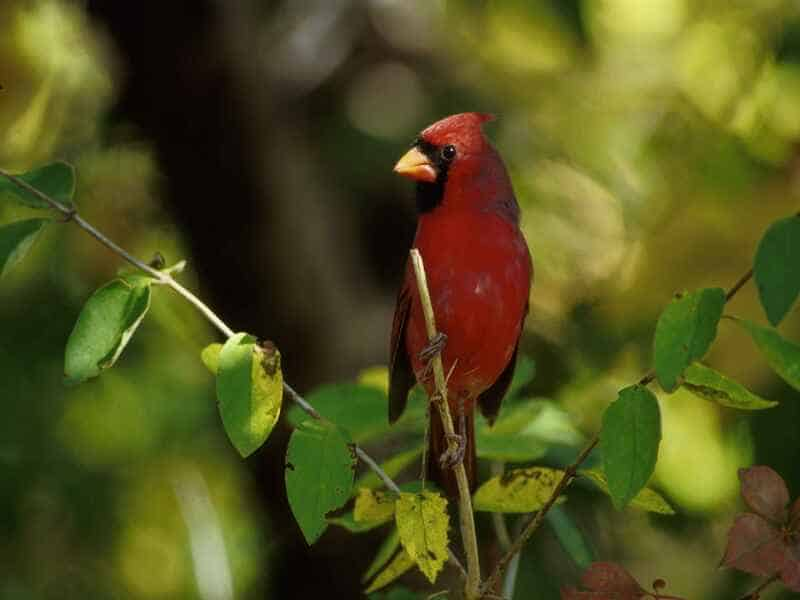
- Length: 8.3 to 9.1 inches
- Wingspan: 9.8 to 12.2 inches
- Weight: 1.5 to 1.7 oz
- Plumage Pattern: Burning-orange and black plumage.
- Most Prominent Feature: Pointed crest with black mask.
The northern cardinal is a songbird. It has a small bill and a long tail. They are almost completely orange with a burning shade and some black scattered above the wings.
Their bill is thick, and a black mask makes it very prominent. The females have a pale brown color with some orange on the tail and wings.
Rufous Hummingbird
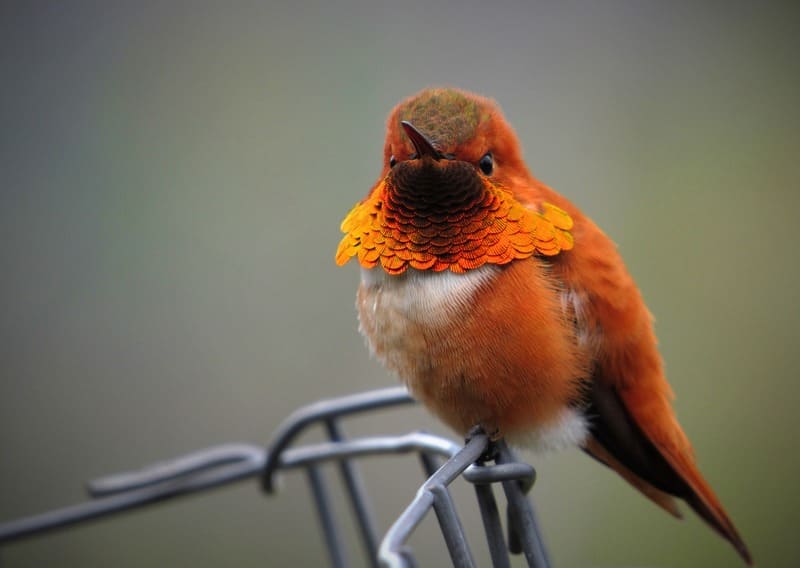
- Length: 2.8 to 3.5 inches
- Wingspan: 3 to 4 inches
- Weight: 1 to 2 oz
- Plumage Pattern: Orange and black with a touch of red.
- Most Prominent Feature: Pointy bill and a radish-orange beard.
The males have brilliant orange and black plumage, while females have greenish-orange patterns. These birds breed on the northern side as far as Alaska and migrate to the South in Mexico to spend their winter.
Vermilion Flycatcher
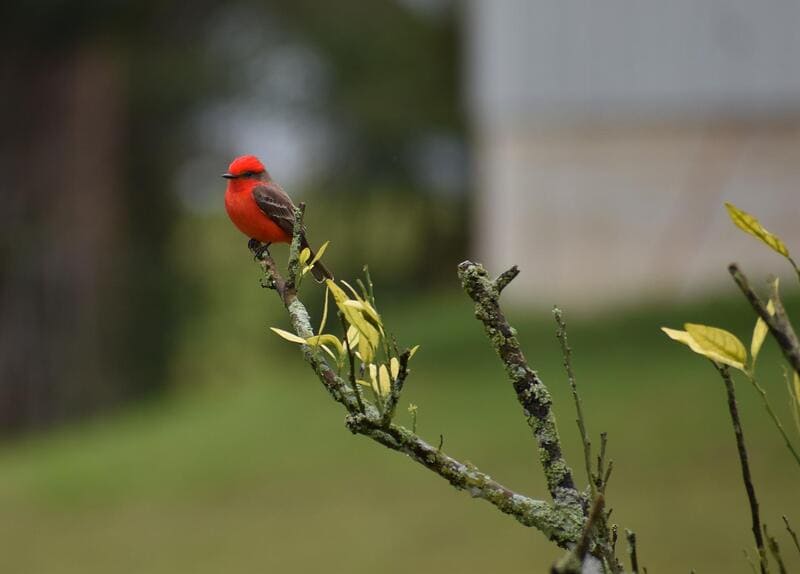
- Length: 5.1 to 5.5 inches
- Wingspan: 9.4 to 9.8 inches
- Weight: 0.4 to 0.5 oz
- Plumage Pattern: Orange and black with reddish touch.
- Most Prominent Feature: scarlet-red crown.
The vermilion flycatcher has reddish-orange underparts while black upperparts. Moreover, males have flaming-orange red crowns while females lack bright red colors.
They catch flying insects mid-air and spend most of their time in exposed locations. They are common in Central Texas, New Mexico, and Arizona.
Red-winged Blackbird
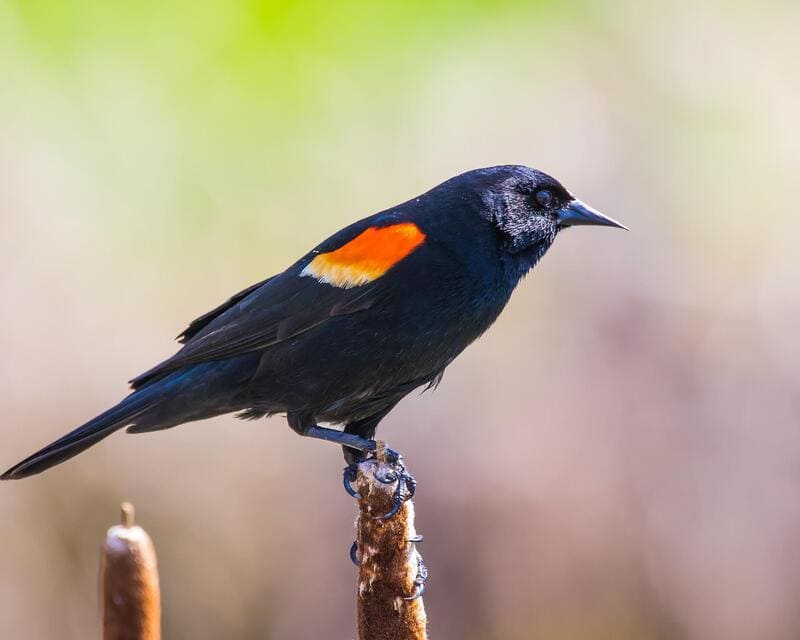
- Length: 6.7 to 9.1 inches
- Wingspan: 12.2 to 15.8 inches
- Weight: 1.1 to 2.7 oz
- Plumage Pattern: Fully black with orange shoulders.
- Most Prominent Feature: Bright orange shoulders.
The red-winged blackbirds are easily identified due to their sticking reddish-orange color around their wings. They are aggressive birds and attack whatever comes too close, especially during breeding.
Black-vented Oriole
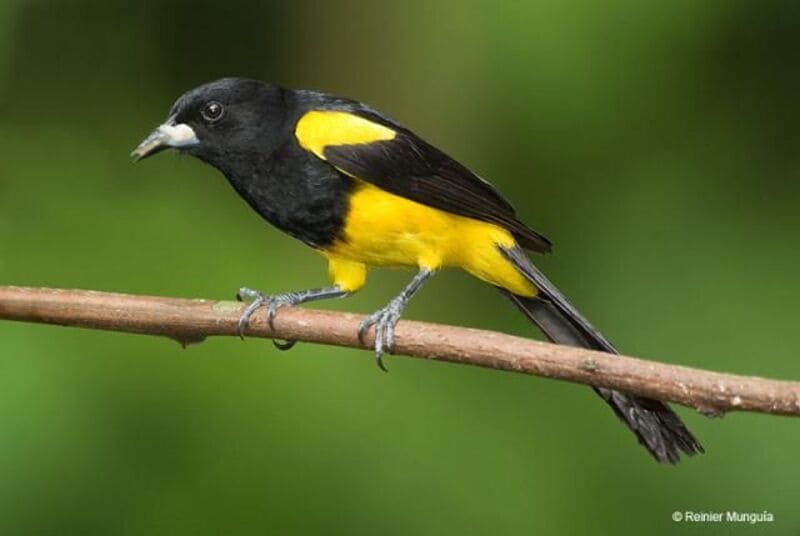
- Length: 8.0 to 9.0 inches
- Wingspan: 12 to 13.5 inches
- Weight: 1.3 to 1.6 oz
- Plumage Pattern: Yellowish-orange and black.
- Most Prominent Feature: Long tail and full black face and throat.
They live in pairs and are native to Mexico and Central America. You can find them across their range all year long. They sometimes migrate for only a short distance. The black-vented oriole has a yellowish-orange plumage with a dark color face, head, and neck Its wings and tail are also black.
Final Words
There are plenty of orange and black birds out there, and this is only a small list. You can find these birds in different parts of the world and during different seasons. So, keep your eyes open and you might just spot one of these beautiful creatures!
Interesting articles:

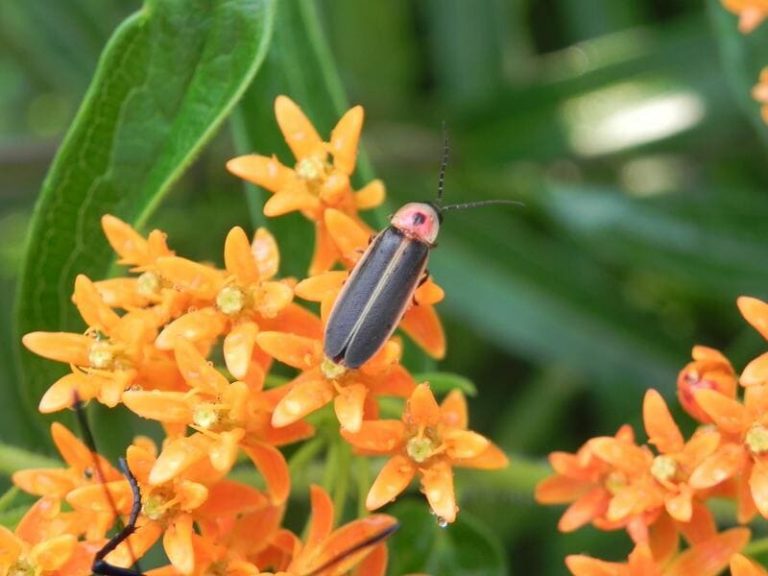
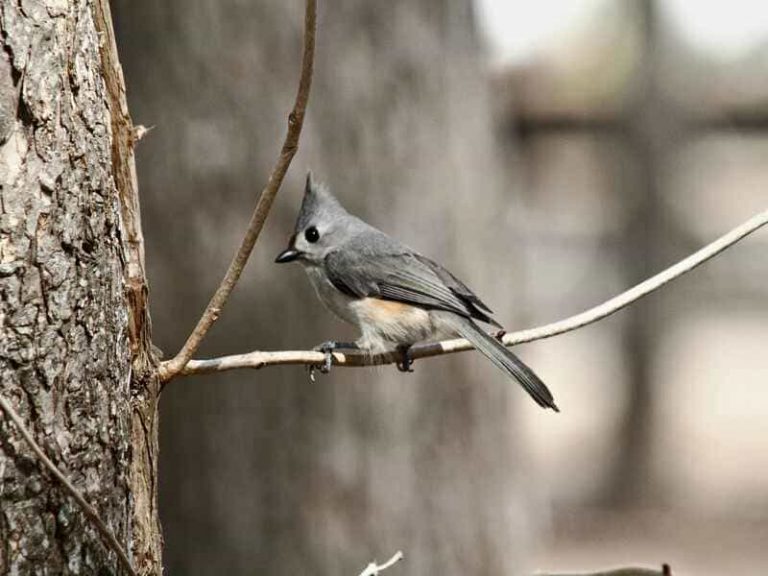
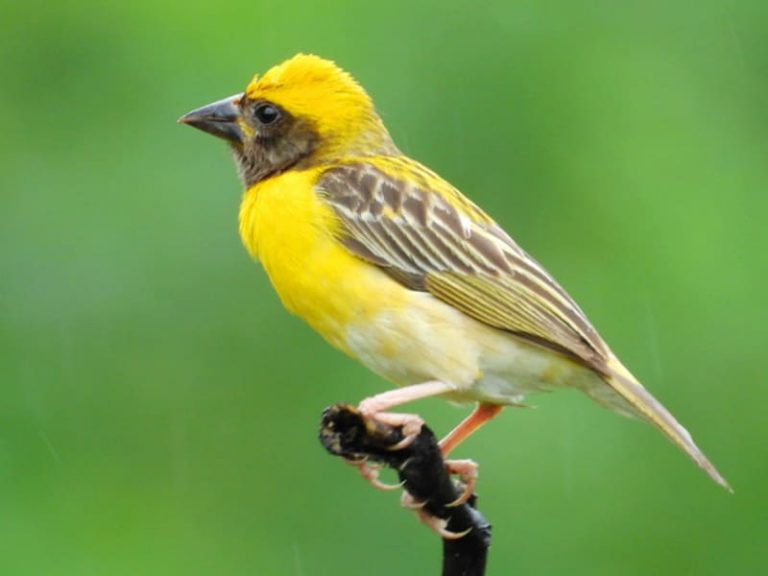
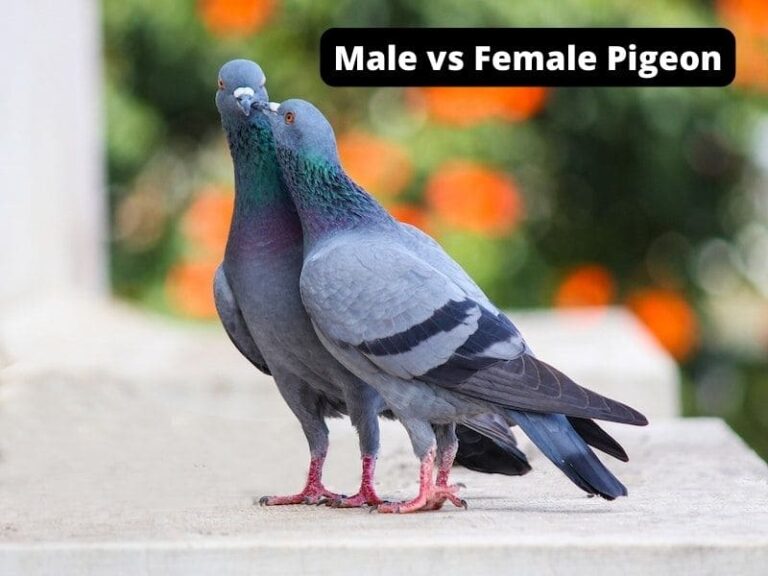
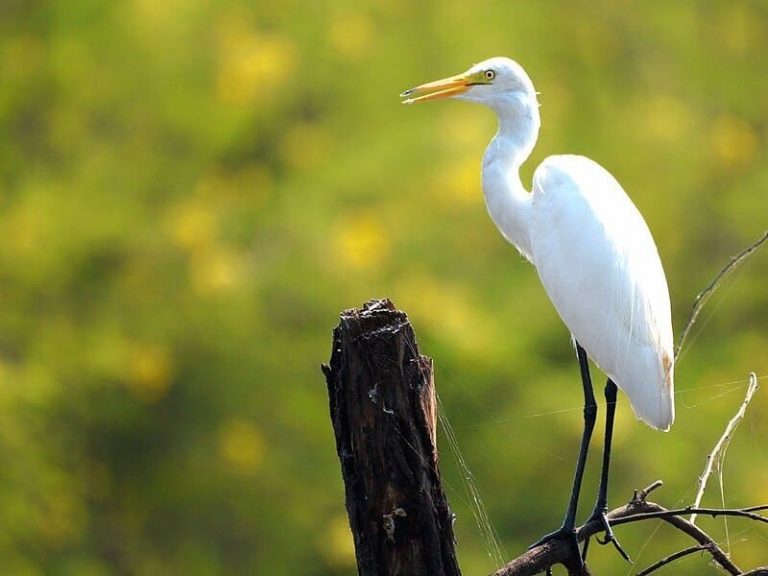
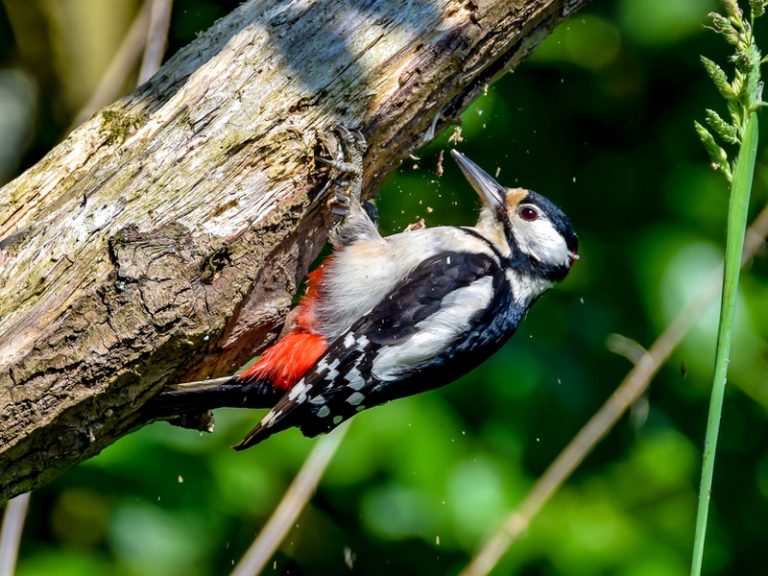
I saw a small bird – made me think finch – but it was solid black and on its lower quarter of the wing feathers was a yellow stripe and on both sides of the yellow stripe was an orange stripe. So two wide orange stripes and in the middle was a yellow stripe. The stripes were even in width and length